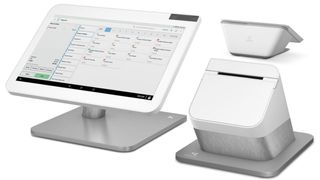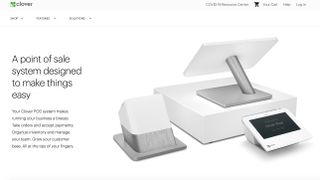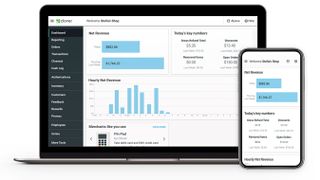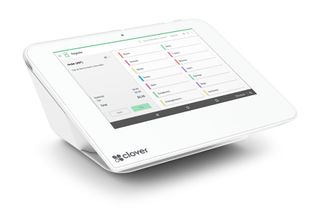TechRadar Verdict
Clover is a suitable point-of-sale terminal for your business but is relatively expensive and complex to set up initially.
Pros
- +
No setup fee
- +
Great customer support
- +
Third-party payments integration
Cons
- -
Expensive hardware
- -
UI needs improvement
Why you can trust TechRadar
Clover is a POS system that launched in April 2012. The company behind the product was incorporated in 2010 and was acquired after two years of existence by First Data Corporation, a well-known payments processing company. Early backers included venture capital firms like Andreessen Horowitz and Sutter Hill Ventures..
Under First Data’s ownership, Clover launched its first hardware solution, Clover Station, a point of sale terminal that allowed retailers to receive payments with ease. In 2016, First Data unveiled a second product called Clover Go, a card reader that works with smartphones. Clover’s point-of-sale products have earned a significant market share in the U.S. and abroad; the company processed over $200 billion in transactions in 2022.
In 2019, Clover’s owner, First Data, was acquired by Fiserv, another payment processing giant. Clover has remained under Fiserv since then but operates as an independent subsidiary.
Clover POS: Plans and pricing

Clover offers four types of point-of-sale hardware; Go, Station, Flex, and Mini. You can either pay outright for a device or rent it on a monthly basis. Renting Clover Station costs $120 per month for the one-screen version and $130 monthly for the two-screen version. Flex costs $35 monthly, while Mini costs $45 monthly. The Clover Go card reader costs $49 one-time (there’s no monthly pricing option for it).
The pay monthly option allows you to get the POS system for your business with no money down, and you can cancel your subscription and return the device at any time. But, if you wish, you can also pay in full ($1,349 for the one-screen Clover Station; $1,649 for the dual-screen Station; $799 for the Mini; and $449 for Flex). The upfront costs are relatively expensive compared to the competition, which is why renting can be a better option for small businesses.
If you use Clover to process payments, then you'll pay a separate 2.3% + $0.10 or $2.6% + $0.10 for all successful card transactions depending on your monthly plan.

Clover POS: Features
Hardware
Clover offers five hardware options:
Station Solo: An all-in-one POS terminal with a single 14-inch touchscreen, cash drawer, and printer. It lets you accept payments from all major credit cards.
Station Duo: The same Station POS systems but with two screens (one for the seller and the other for the customer).
Go: A compact card reader that works together with the Clover mobile app. It uses Wi-Fi or a cellular connection.
Flex: A handheld POS system with a 6-inch touchscreen, built-in printer, camera, and barcode scanner.
Mini: A full point-of-sale system yet in a compact package. It features an 8-inch touchscreen, a card slot, a contactless card reader, and a built-in receipt printer.

Point-of-Sale System
The most important part of using Clover is the software system that works with the hardware. This system makes it easy to collect payments and run your business regardless of what type, e.g., restaurant, hotel, brick-and-mortar retailer, etc. It manages every aspect of processing payments, including organizing inventory and collecting money from customer cards.
This POS system is cloud-based, so you can track your sales, deposits, refunds, and sales reports from anywhere as long as you have the correct login details. It features integrated sales reporting, so you can use real-time or past data to track your business performance and visualize it with customizable reports.
Depending on the hardware you select, your POS system can be handheld, portable, or countertop-based. Besides, you can purchase Clover-approved third-party accessories for your POS hardware, e.g., a weight scale, barcode scanner, and cash drawer. There are also many third-party apps developed for Clover’s point-of-sale hardware, e.g., a customer discount app and accounting software.
Payment Processing
You can use Clover’s payment processing system for your hardware or choose a third-party processor (Clover does not restrict its devices to its own payment system, unlike many other rivals).
If you choose Clover's payment processing platform lets you accept payments from credit cards, debit cards, or gift cards. Customers can insert their card chip, swipe the card, or tap it to pay for your products or services. You can also scan and submit paper checks or add a cash drawer to collect and record payments as easily as you would digitally.

Clover POS: Interface and in use
One of the major complaints we observed when researching for this review is that Clover can be difficult to set up initially and the user interface can be confusing at times. You may face some difficulty trying to configure and use the POS system, but with time, you should get used to it.

Clover POS: Support
Clover offers customer support through email and telephone. There's a single support email, while telephone support lines vary depending on your country. There’s no live chat option, which we consider a disadvantage, but many customers speak highly of the company’s customer service offered via email and telephone.

Clover POS: The competition
The Stripe Terminal and GoDaddy Terminal are two major competitors to Clover’s point-of-sale systems. Stripe offers its hardware upfront at a significantly cheaper price than Clover’s, but it has higher payment processing fees.
GoDaddy offers cheaper hardware systems and lower transaction fees. But, customers can only use GoDaddy’s payments processing software, unlike Clover which allows you to use other payment processors.
Other options in the POS marketplace include Sage Pay, PaySimple, Authorize.net, Worldpay, PayPal, Helcim and Stripe. If you want to weigh up Clover against a leading competitor, read our Square POS vs. Clover POS system review.
Clover POS: Final Verdict
Clover is a reliable point-of-sale system to run your business with. It lets you accept payments with ease, and you’re free to choose whichever payment processor you want despite using Clover’s hardware. However, Clover’s hardware is expensive to purchase upfront and the user interface can be confusing to new users.
Further reading
You may also like our articles on the best POS systems for restaurants, small businesses, and retail, or how to choose the right POS system for your business, and 9 inspiring ideas on how to use POS system customer data.
Stefan has always been a lover of tech. He graduated with an MSc in geological engineering but soon discovered he had a knack for writing instead. So he decided to combine his newfound and life-long passions to become a technology writer. As a freelance content writer, Stefan can break down complex technological topics, making them easily digestible for the lay audience.


